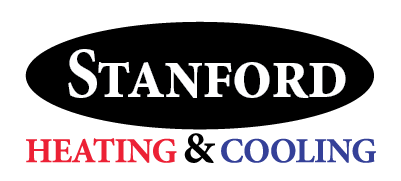
You shouldn’t need to sacrifice comfort or empty your wallet to keep your residence at the right temp during the summer.
But what is the ideal setting, exactly? We discuss ideas from energy professionals so you can select the best temp for your residence.
Here’s what we advise for the most energy-efficient setting for air conditioning in Bloomfield.
Recommended Thermostat Settings for Summer
Most people find placing the thermostat at 72-73 degrees is most comfortable. However, if there’s a major difference between your inside and outside temperatures, your cooling expenses will be greater.
This is our advice based on the U.S. Department of Energy (DOE) and ENERGY STAR®.
While at home: 78 degrees. While that seems hot, there are methods you can keep your house cool without having the air conditioning running constantly.
Keeping windows and curtains shut during the day keeps cool air where it should be—inside. Some window treatments, such as honeycomb shades or plantation shutters, are created to offer extra insulation and better energy savings.
If you have ceiling fans in your residence, the DOE says you can raise thermostat temps about 4 degrees hotter without compromising comfort. That’s since they refresh by a windchill effect. As they cool people, not rooms, shut them off when you leave a room.
If 78 degrees still seems too warm initially, try doing a test for about a week. Begin by increasing your temperature to 78 degrees while you’re home. Then, gradually turn it down while following the ideas above. You could be amazed at how comfortable you feel at a warmer temperature setting.
While away: 88 degrees. There’s no need to keep the AC working all day while your residence is empty. Switching the setting 7–10 degrees hotter can save you an estimated 5–15% on your electrical bills, according to the DOE.
When you get home, don’t be tempted to switch your thermostat below 78 to cool your residence more rapidly. This isn’t useful and typically leads to a more expensive AC bill.
A programmable thermostat is a useful method to keep your temp in check, but you need to set programs. If you don’t utilize programs, you risk forgetting to move the set temperature when you go.
If you want a hassle-free remedy, consider installing a smart thermostat. This thermostat works with with your phone, so it knows when you’re at your residence and when you’re gone. Then it intuitively adjusts temperature settings for maximum savings. How much exactly? Typically $180 annually on heating and cooling, according to ENERGY STAR.
Another perk of getting a smart thermostat? You can use your phone to watch and regulate temperature settings from nearly anywhere.
While sleeping: Around 70 degrees. While ENERGY STAR suggests 82 degrees, that may be too uncomfortable for many families. The majority of people sleep better when their sleeping area is cold, so that’s why the National Sleep Foundation advises 60–67 degrees. But that could be too cool, depending on your pajama and blanket preference.
We suggest using a comparable test over a week, putting your temp higher and slowly decreasing it to determine the best temperature for your residence. On cool nights, you might find keeping windows open at night and using a ceiling fan is a preferable option than operating the air conditioner.
More Ways to Conserve Energy This Summer
There are additional ways you can spend less money on utility bills throughout warm weather.
- Install an energy-efficient AC system. Central air conditioners only work for about 12–15 years and get less efficient as they become older. An updated air conditioner can keep your house comfier while keeping electrical expenses low.
- Set yearly air conditioner tune-ups. Regular air conditioner maintenance keeps your equipment working like it should and may help it work at greater efficiency. It may also help lengthen its life cycle, since it allows technicians to spot small issues before they lead to a major meltdown.
- Put in new air filters regularly. Read manufacturer instructions for changing your air filter. A clogged filter can lead to your system short cycling, or turn on and off too frequently, and drive up your energy.
- Measure attic insulation levels. Nearly 90% of homes in the USA don’t have enough insulation, according to the Insulation Institute. Most southern climates should have 13–14” of attic insulation, while northern climates require 16–18”.
- Have your ductwork checked. Ductwork that has loosened over time can let cold air into your attic, walls or crawl space. This can result in major comfort issues in your house, like hot and cold spots.
- Seal holes, doors and windows. Keep warm air in its place by sealing cracks. You can also caulk or weather strip doors to keep more cold air within your home.
Save More Energy This Summer with Stanford Heating & Cooling
If you are looking to save more energy this summer, our Stanford Heating & Cooling specialists can provide assistance. Reach us at 812-825-8695 or contact us online for additional information about our energy-saving cooling options.

